One of the few exhibitions to truly impact the Bucharest art scene in 2019 was titled kinema ikon: films / 1970 – 2020 and took place at Rezidența BRD Scena9, in preparation for the group’s 50-year anniversary. The fact that this half a century of art and community encompases a diverse series of periods – 16mm experimental film (1970-1989), digital art (1994-2005), recuperations of analog media, namely prints, objects, and installations (2006-2016), as well as a turn towards digital and augmented reality (2017-presently) – is a testament to the group’s paradigmatic status, bearing witness to the key trends of neo-avant-garde film and media art. Furthermore, the Transylvanian group is illustrative not only within the history of new media in Romania, but also of the general workings of what Flusser called technical images and the way they relate to the paradigm of contemporary art.
KINEMA IKON AND THE NEW MEDIA PARADIGM
The Romanian art scene began to gain momentum in the early ’90s under the influence of the recently founded Soros Center for Contemporary Art. kinema ikon’s paragon status is attested by their participation in the most prestigious international exhibitions and colloquiums at the time: 01010101 (1994, curated by Călin Dan), MEdiA CULPA (1995, curated by Aurelia Mocanu), EXPERIMENT (1996, curated by Alexandra Titu). The key point, in my opinion, is that all these events dedicated to new technologies and experimental art were conceived starting from the premise of continuity, that is, of the integration of the new media paradigm within the contemporary art scene. This went against the opinions expressed at the time on the international scene, where the dominant opinions jived with Lev Menovich’s skepticism (The Death of Computer Art, 1996) towards the convergence of Turing-land (the world of digital new media, lacking irony and conceptuality and subordinated to technology) and Duchamp-land (the ironic and conceptual world of contemporary art).
ki’s belonging to the world of new media is certain: between 1996 and 2005 the group, driven forward by Călin Man and Caius Grozav, who were well-versed in computational languages, pooled their efforts exclusively towards digital projects, hypermedia (offline) and net art (online). They also took part in the ISEA (International Symposium of Electronic Art, in 1998 and 2000), a colloquium within the Turing-land paradigm. However, Manovich’s reasons for banishing digital works from the idealist tower of contemporary art are contradicted by kinema ikon’s projects like Opera Prima, alteridem.exe, or Commedia del Multimedia. The fact that the group’s CDs and websites do not lack irony or humor, while also being conceptually consistent and bearing a social message, is only confirmed by their participation in the 2003 Venice Biennale.
This same biennial will demonstrate unequivocally in 2019 what kinema ikon and Romanian media art have predicted since the ’90s, namely that new media projects can successfully compete on the contemporary scene, assimilating postmodern, posthuman, postinternet critical discourse (see the works of Hito Steyerl, Anicka Yi, Ed Atkins, Zhana Kadyrova, NABUQUI). The ’90s saw attempts at isolating and developing a language and aesthetics specific to digital media, which were, in the end, of little consequence. Today, however, the dominant paradigm of continuity confirms the technical (digital, video, film, etc.) image as a fruitful medium for artistic development and the internet as a continuation of the public sphere.
In conclusion, the crucial relevance of kinema ikon stems, on the one hand, from the way they manage to detect and capture patterns common to experimental film, video art, and digital art (the workings of the technical image), and, on the other hand, from the way their tech-based works are integrated into the broader contemporary art scene. ki is therefore among the first projects to reveal the hybrid territory that is nowadays shared by the visual arts, sound art, and the performing arts. All these make the group a benchmark for the Romanian media arts scene and a key witness in the process of mapping out the contemporary art scene in its totality, encompassing playfulness, interactivity and social involvement, interdisciplinarity, intermediality, and a conceptual message.
INTERMEDIALITY AND INTERDISCIPLINARITY
Regarding the group’s interdisciplinary and intermedial nature, it is enough to look at their formation at the beginning of the 1970s in order to allow illustrators, painters, photographers, architects, and musicians the possibility of transcending their normal ways of working and to produce instead playful and dynamic film experiments. Ten years later, when a symposium for experimental film was organized in Arad, the group’s founder, aesthetics theorist George Săbău noticed that young filmmakers felt a stronger connection to the visual arts than to the film industry. These young filmmakers’ productions were screened – even before the digital period of the ’90s – mostly in museums and galleries (Studiu, Medium, Spațiul-Oglindă), alongside paintings, photos, and mail art exhibitions organized unofficially under the group’s name. Relevant are also the group’s collaborations with musicians, poets, theorists, computer scientists, philosophers, writers of the ’80s generation (most of the contributors to the magazine Intermedia, edited by ki from 1994 on), and architects of the L’ene collective (2015).
The exhibition kinema ikon: films / 1970 – 2020, opened in November at Rezidența BRD Scena9, was the space for a stimulating collaboration with Electric Brother, a successful composer of electronic music, trip-hop, downtempo, and chill-out. In the work Intervenții pe peliculă de 16mm (Interventions on 16mm Film) the artist edits film fragments from the ki archive using a wide range of materials (a scalpel, tape, a soldering iron, toilet paper). The results are then viewed with the help of electric microscopes and displayed on monitors. This roleplay through which the musician becomes a digital painter is what makes this a representative ki collaboration. Also relevant is the operation itself: the musician transforming film segments into aesthetic objects through scratches or colors. To borrow from Paik’s prepared piano (the détournement of musical instruments towards new sounds and functions, among which that of aesthetic object), we could call these works “prepared frame-objects.”
In addition to being accidentally (or not) beautiful, the abstract images of Interventions… are a comment on the relation between analog and digital, sound and image, form and movement. This statement about film as medium (frequent in ki’s projects, as will become clear later) links their work to the repertoire and aesthetics of structural film, which Săbău explicitly names as one of the group’s influences. Thinking of ki’s films in relation to iconic structural works like Michael Snow’s La Région Centrale, Back and Forth, or Wavelength, we can see the collaboration between curator Călin Man and visual musician Electric Brother as just the most recent instalment in an extensive visual analysis about the status of film, the affective workings of memory, the degrees of ubiquity of sight, and technology’s impact on our perception.
Lastly, the visuality of Electric Brother’s imagery communicates with the poetics of the experimental films Vânătoarea de păsări / Bird Hunting (Emanuel Țeț, 1980) and Efecte de împrimăvărare / Spring Effects (Ioan Pleș, 1978), screened in the same room. It should be mentioned here too that Pleș’s and Țeț’s (both painters) films, epitomizing the lyrical aesthetics and direct intervention on film practiced by ki between 1970 and 1989 (under the influence of Stan Brackage and the American neo-avant-garde) were digitally recontextualized with the project OST’n’ReST (EUROPALIA, 2019) at Rezidența BRD Scena9.
The digital application OST’n’ReST – with masterful visuals made by reVoltaire (aka Călin Man) – comprises ten films from between 1970 and 1989 (plus an epilogue by Călin Man) and includes a soundtrack that was recomposed by five Belgian and five Romanian composers (including the famous spectralist composer Iancu Dumitrescu). The result is an intermedial product for which the soundtrack is essential (the possibility of watching each film with different soundtracks shows how sound influences the visual component).
What is also notable is that the venue of the latest exhibition in Bucharest, Rezidența BRD Scena9, is itself a space of intermediality and interdisciplinarity, confirmed by their programs dedicated to the visual arts, literature, experimental music, organized by cultural figures like Suzana Dan, Svetlana Cârstean, and Mitoș Micleuşanu. I will also mention that the opening of the kinema ikon : films / 1970 – 2020 exhibition in November coincided with an event part of the Post Muzica program, centered around former ki members Dyslex (a noise music veteran) and Mihai Sălăjan (Selfmademusic, a musician and film director). Furthermore, Electric Brother’s contribution was continued in December at the last Post Muzica event, at which the artist presented his film interventions viewed through an electric microscope.
PLAY AND THE TRANSCENDENCE OF ART GENRES
The way that ki’s artistic production developed organically from experimental film (with occasional painterly interventions) towards mixed media installations, net art, and digital projects shows a contribution to a more general trend of transcending the boundaries of art genres. Their works reflect the transformations and features of contemporary art in the key period following the ’60s. ki’s transcendence of genre boundaries, through what Săbău calls movies hard to place (“filme greu situabile”) as well as digital productions, communicates not just with the neo-avant-gardes, but also with the ideas of New Wave directors or with the experimentalism in contemporary music and dance.
Importantly, all stages of kinema ikon’s work develop under the influence of play. It must be mentioned that this openness towards play, confirmed by ki’s theorist-founder George Săbău, does not imply that the artistic process is mere leisure. On the contrary, like in the case of Dada, surrealist, or Fluxus film, play helps overcome redundancy and the conventionality of the art object. By invoking the distinction made by Huizinga between the notions of play and playing, culture returning in this sense to a “serious play,” one can argue that kinema ikon’s digital works, experimental films, and mixed media pieces from between 2006 and 2019 represent instances of “serious play.”
A FEW AESTHETIC CONSIDERATIONS ON KI’S FILMS 1970-1989
kinema ikon: films / 1970 – 2020 showcased more than 62 experimental films made by ki between 1970 and 1989 – some digitally recontextualized (see OST’n’ReST), others screened in the original format. The famous Vorspann (1995), compiled by Săbău from shots from all 62 previous films, was also an occasion to see these auteur films (in how far we can refer to an experimental film, which oftentimes shows the point of view of the recording device itself, an auteur film is a different discussion; let us say for now that the term is used in a weak sense), which are hard to place in a single genre or aesthetics.
In terms of style, we may note that even though Săbău refers to ki’s productions as “hard to place,” there is a group aesthetics present. Săbău himself offers a few examples, mentioning three directions of avant-garde film that ki’s works follow. These are lyrical or pictorial film, which cultivates dynamic abstraction and interventions on the film itself (coloring, scratching), psychoanalytic film, which makes use of dream-like effects and symbols (the eye, the mirror), and montage-based film (characterized by overlays and syncopated rhythm). Generally the group’s productions situate themselves somewhere at the intersection of these directions, but there are some members who prefer the first (Ioan Pleș, Emanuel Țeț), the second (Ioan T. Morar), or the third (Alexandru Pecican).
The collage that is Vorspann is a good place to see all three directions, with their overlaps and differences. As a collective project and, again, in the weak sense, an auteur film (see montage as a specifically postmodern means of creation through selection and recontextualization) it represents one extreme of ki’s “hard-to-place” work and a chance to identify the building blocks of the group’s aesthetics more generally.
An aesthetic trait thus revealed is, in my opinion, the cultivation of an alternative, non-mathematical, non-quantitative spatiality. One sees how, through montage and various other perception-fragmenting techniques employed in Vorspann, a mimesis of the physical world is rendered impossible. The eye of the camera thus is no longer a simulation of the human eye. Instead, it is set free, launching into sudden zooms, travelling, and making circular motions that produce a vertigo effect. At times it jumps suddenly from darkness to light and back again. Other times it follows, in a syncopated rhythm, the iron railing of an old building or maps out the space of a room in a communist apartment building. The film weaves a labyrinthic tread of close-ups and detail shots: a mouth, the texture of fingers, a doorknob, an eye, another eye, a shoulder seen through a polyester curtain from the communist era, a bird perched on a telegraph wire, the head of a cat, the rotary dial of an old phone, fingers pressing the keys of a piano, the spokes of a bicycle wheel, the wheels and gears of a machine. Additionally, some sequences assemble hybrid portraits from real and virtual layers or mix representation (photographs, film) with reality: a film is projected onto a person’s face, an old group photo breaks down in hot water. Stretched to its limit, the camera zooms in so much that any contact with reality ceases: everything dissolves into a dance of textures: zoomed-in views of aluminium foil, transparent veils, a line of film melting.
kinema ikon’s creative use of montage, together with other perception-fragmenting techniques (superimposition, close-ups and detail shots, sped-up footage, hand-held shots) makes their films function as meta-films, connecting somewhat to the discourse around the mechanical eye, the kino-eye in Man with a Movie Camera (Dziga Vertov, 1929). Like the American neo-avant-garde, be it lyrical or structural, kinema ikon’s work is more than an exercise in perception, more than the construction of a non-human vision, a vision of matter itself, of the eye of things. If Vertov focused on the question of physical perception, kinema ikon also raise meta-physical questions, probing thought, affect, and even time, memory, and dreams.
These same techniques of fragmentation, when associated with dream symbolism, draw a connection between ki’s work and psychoanalytic film, reminiscent of the imagery of Buñuel or Maya Deren’s Meshes of the Afternoon. A blinking eye’s jerky movements, a pair of lips that fills the screen, a face doubled in a mirror, a hand sensually caressing a wall, a shadow advancing along a wall, a floating silhouette defying gravity, another crossing an empty street covering its face.
At the intersection of fragmented perception and post-pictorial techniques pursuing the meta-levels of thought and affect, ki’s proximity to avant-garde cinema makes itself seen: flocks of red birds painted on the film crowd the sky, white lines of flight accentuate the motion as the camera crosses a country field, sudden solarization in landscapes frighten and fascinate, reminding one of Brackage’s The Way to Shadow Garden. Strong metaphors are added, which are augmented through juxtaposition. A man trapped in a net of film breaks free. A horse nuzzles the mirror of a dark water. Poetry emerges at the meeting between a soldier carrying a rabbit in his arms, a couple that seems to be dancing inside a fish tank, a young man tearing pages and hammering nails into a diary, an accordion player, the head of a young woman wearing a bridal veil, a close-up of a blond child reminiscent of a Tarkowsky film but also of the ideal beauty of the young man of Visconti’s Death in Venice.
We may conclude that all these features help define an autonomous artistic space indifferent towards representing the appearance of reality. Paradoxically, this autonomous space of affect and fragment, a space governed by its own rules, preserves, in my opinion, a hidden connection to the real, opening up the possibility of representing not the surface but the inner workings of the world.
This brings us to another characteristic mentioned by Săbău, which mainly applies to the films from the ’90s. Even though Săbău mentions the possibility of contemplation, it is clear that this has nothing to do with more popular notions of contemplation based on long sequence shots cultivated by Italian neo-realists and theorized by Bazin as the “image fact.” Săbău’s notion of contemplation emerges by immersing the viewer in the daily life of communist Romania. Could this be a connection to the Romanian New Wave? Given that ki’s films do not follow a linear narrative, I would answer in the negative. The following question however remains open: how do we situate ki’s productions in relation to the aesthetics of realist film and with socio-political involvement?
In a text included in the catalogue kinema ikon – films, Cristian Nae argues, building on Rancière’s notion of the politics of aesthetics, that ki’s fragmented and distorted way of representing reality, as opposed to the classically narrative style of official art at the time, represents a critical (socio-political) self-placement in relation to the regime. I would take it one step further and argue that it is not just the form but also the content of the films that contributes to the social commentary as they effect a subtle analysis of the real.
To try to get to the bottom of the question of how ki’s films relate to the real, we may start from the solid premise that ki’s realism cannot be of the naive, descriptive kind, but rather a kind of ontological realism, similar to the one theorized by Bazin, except that the story has been replaced by non- or pseudo-narrativity. A first series of connections can be made, as stated before, with the meta-physical realism of lyrical (Stan Brackage, Joris Ivens) or structural (Michael Snow) experimental film. A second connection may be made to Dziga Vertov’s school, focused on montage and new technical possibilities but also on the way reality can be narrated like in a newsreel (the fact that ki worked on documentary films in parallel supports the interpretation). We should mention however that Vertov focused on the physical perception of the non-human, as well as the fact that, unlike the Russian school, the Romanian artists did not support the communist regime (after many members of the group fled the country, ki found themselves under the Securitate’s surveillance).
It is interesting to note that in his book Cinema I Deleuze mentions the above-termed “meta-physical realism” directors when he talks about affect images and the “any space whatsoever.” Unlike the classical cinema of the movement image, which was interested in depicting a plausible story whose actions and moods are structured by a narrative, and unlike documentaries reduced to representing (copying) places and moments of the perceptible world, films set on depicting thought and affect and on constructing alternative, non-physical spatialities refusing both linear plot and the trivial mimesis of the real. Therefore, beyond particular events, beyond psychologism, Ivens’s films speak about what rain as rain means as we unconsciously dance into the city’s puddles or when, full of nostalgia, we count seconds along with the droplets running down the window. Brackage’s films deliver the intoxicating passion and joy of sight, and Snow’s grapple with the impossibility of death and the fragility of poetry in a world of immortal technology. The spatialities created by these kinds of films are, according to Deleuze, either affective spaces dominated by close-ups of faces expressing sadness as sadness, fear as fear, or void spaces where reality is fragmented (and recomposed according to new principles).
I believe ki’s films fit into this paradigm of affect images and non-physical spaces (of color, affect, void, fragmentation). They speak of time, poetry, eros, freedom, of craft and nature in the same non-descriptive, philosophical fashion. In other words, the filmmakers of ki conceive of the world using concepts like color, focal distance, montage rhythm, sound, melody. Viorel Simulov’s Peisaj Lichid / Liquid Landscape, 1988), for instance, is an exercise in phenomenology. It stands at the intersection of the discourse of time as duration, flow, with that on space, horizontality, and verticality. He mentions Michael Snow’s masterpiece La région centrale, which delivers physics (a discourse on motion) together with a meta-physics (a discourse on what lies beyond the visible).
Furthermore, as Italian neorealism combined ontology with relevant socio-political commentary, ki’s films deliver a phenomenology of image where daily life is recuperated in all its banality and poetry, though not with long, slow shots like the neorealism Bazin talks about, but with fragments. To give an example from the group’s ’80s films in which this recuperation of the real transpires, there is Valentin Constantin’s Început de coerență / Beginning of a Coherence, 1981. Beyond the pseudo-narrative based on the story of sudden attraction, the film captivates through myriad fragments of communist Romania: the Russian-style hats pulled down over one’s eyes, the filterless cigarettes lit at the stove or with matchsticks, men with mullets and mustaches walking, hands in the pockets of their trench coats, elegant women with long hair wearing high heels and large earrings, broad-shouldered coats with fox-fur collars. The national car, the Dacia, is also present in many films of the time. It appears in older films, like Florin Hornoiu’s Navetișii / Commuters, 1975, in a kaleidoscope of images of people riding on trains or buses, early in the morning, pressed against each other, sometimes asleep or bored, other times happy, playing cards standing up or leaping out of the train as it pulls into the station. Sound also helps capture the effect of the times, see the famous phrase “La semnalul următor va fi ora… 20, 58 de minute, 20 de secunde…” [“At the sound, the time will be 20 hours, 50 minutes, and 20 seconds”] from Romulus Budiu’s Singur cu zăpada / Alone with Snow, 1975.
’80s free-time activities are depicted in films like Cristi Jurcă’s Stereomania (1980), a disco-themed trip in a world of bell-bottom pants and saturated colors (electric blue, red). The postmodernism of the time is seen at the intersection of dynamic abstractions and footage from pop concerts, with songs like Iko Iko (first released in 1953, then recontextualized, making its way back into the charts in 1965 and 1982), and with images of a concert hall where classical music is being played.
These realist reconstructions of a time and place, based on small gestures, objects, daily sights, are overlaid with more or less allusive political commentary. For example, in Ioan T. Morar’s Autopsia uitării / Autopsy of Forgetting, 1977 the brief shot of a poster announcing the 1977 National Conference of the Communist Party interacts semantically with shots of applauding hands but also with the image of a young man with his hands against a wall or a silhouette cowering behind a fence on which five candles burn. In Romulus Bucur’s Nu trageți în pianist / Don’t Shoot the Pianist, 1977 (the title may be an allusion to Truffaut; furthermore, as the film critic Irina Trocan pointed out to me, it may also refer to a line one might hear in a western film), the obsessive image of a gun meets the horn of a phonograph and the recurrent message of the famous record label His Master’s Voice. In Budiu’s Singur cu zăpada, a muzzled German shepherd awaits his signal in front of a house while, inside, a man washes clothes ritualistically in a big pot on the fire. In a number of films (like Ioan Pleș’s Poluare / Pollution) there are shots of people running across a field or along train tracks, anticipating and confirming the fact that many of the group’s members would flee the country.
FLUIDITY AND RECONFIGURATION
Returning to the exhibition at Rezidența BRD Scena9, which offers an overview of all the above-mentioned periods in ki’s work, I’d like to make some notes on how this unique overview is created, beyond the restrictive format of a simple retrospective. A new important feature makes itself felt here: the fact that ki’s work functions as an open work (open to collaborations, reconfigurations, and interventions from the audience). In other words, the overview curated by Călin Man commendably showcases the works’ potential for constant reconfiguration, mobility, and fluidity, as they easily slide between past, present, and future. This play also implies a transition between different media: from film to installation, from installation to performance and back, passing through documentaries, to film, stop-motion, illustrations, printed material. A 16mm film becomes the center of a VR landscape, a documentary about Ceaușescu’s visit in Arad is the basis for a participative installation. In the eyes of the audience, ki seems to have the power to even stage Bergson’s notion of duration, the flow of time itself.
Of all these transitions, the strongest is probably how experimental or documentary films from the communist period are adapted to the new digital context and transformed into multimedia applications, interactive works, or virtual landscapes. A first example is the aforementioned OST’n’ReST (EUROPALIA, 2019), a collection of eleven experimental films shot on 16mm (made by people like Emanuel Țeț, Ioan Pleș, Călin Man, Romulus Budiu, Ioan T. Morar) made into an intermedia/digital work that allows one to view the films with multiple soundtracks. Artist Alex Halka, skilled both in tech and music, transforms six other experimental films into an application for the Oculus Go and nine documentaries from the same period (with titles like Primăvara Arădeană / Arad Spring, Propaganda vizuală / Visual Propaganda, Ceaușescu la Arad / Ceaușescu in Arad) into an installation where the shadows of the viewers interact with the multi-screen projection. It is important to note how the 62 documentaries (which, during the communist period, represented a pretext to source film for their alternative series of 62 experimental films) become loaded with meaning, like the anthropological connotations of authentic documentaries.
The Vorspann project, George Săbău’s montage of shots from all 62 experimental films the group made between 1970 and 1989, marking the end of a stage in their work, relates to their recent installation Miroase a pești de sticlă / It Smells like Glass Fish (Radu Cosma, Iulia Cosma, 2014), a postmodern discourse mixing various themes – truth, authenticity, imitation, collection, collector, the copy-original dichotomy. It should be noted that Vorspann was made in 1995, when the group was able to accept the former invitation of the Pompidou Center to screen some pieces at the Cinéma de Musée. This moment of political transgression, of crossing the boundaries, of surpassing the limits of a local culture may be expressed through a ritualistic flow towards Europe. This is how we may interpret Miroase a pești de sticlă, which is a virtual corridor, open in front of a monitor on which Vorspann is playing, along which decorative glass fish (such as one might see in people’s homes during the communist era) are swimming towards the EU. The project is of excellent aesthetic quality and conceptual depth and is part of a recent stage in the group’s work, the event kinema ikon: serial (series), which had three seasons, in 2013, 2015, and 2016. As one of ki’s typical open, fluid works, Miroase a pești de sticlă easily goes beyond the format of an installation into that of a film and into that of a chapter from their serial.
Ki’s members follow this same model of fluidity. Călin Man, the curator of serial, easily takes on the role of artist or designer (perhaps also aided by his pseudonym: reVoltaire). George Săbău, the Arad artists’ philosophy teacher, is also a group founder, theorist, and award-winning artist. Ileana Selejan, curator of ki events, is an anthropology professor in London, an artist, and a celebrated theorist.
The kinema ikon: serial project has an open, interdisciplinary, intermedia, transgenerational structure. Its three seasons (the notion of season makes one think of the society of the spectacle’s new mutations) bring together, along with its leaders reVoltaire and geosab (aka Săbău), a new generation of artists placed at the intersection of the visual with anthropology, theory, poetry, music, architecture: Nita Mocanu, Marius Stoica, Vasile Leac, Cristina Bogdan, Maria Balabaș, Bogdan Tomșa, Bogdanator, gH, and groups like IC RC, l’ene, etc. In the second season the artists are joined by a series of curators, among whom an old but essential member of the group (Judit Anghel), the newer but also essential Ileana Selejan, and, last but not least, younger collaborators like Daria Ghiu, Horea Avram, Adriana Oprea, Diana Marincu, and megatron.
The structure of serial is typical of a game, organized around a virtual world with its own laws, spatialities, and temporalities. If in the first season the artists have to illustrate the name of the group (as movement and image), in the second the presence of the curators increases the game’s complexity, only for it to become a complex play of interrelating subjects and episodes in the third one. Each season produced installations exhibited at the Arad Art Museum in the ki room (starting in 2012), but also (experimental) films and writings masterfully laid out by reVoltaire in the three related catalogues.
kinema ikon : films / 1970 – 2020 in Bucharest will recontextualize as installations, in addition to Miroase a pești de sticlă, two other episodes from season 1: Bogdanator’s Utopian (păstrătorul de limbi moarte) / Utopian (dead language keeper) and reVoltaire’s Fifty Mississippi. Both projects distinguish themselves through the high aesthetic production quality as well as by raising questions about the status of images as spectacle, the relation between world and representation, digital and analog, real and virtual.
The multimedia installation Utopian (păstrătorul de limbi moarte) was the main attraction of the exhibition at Scena9, as the visitors’ instagram accounts showed. This huge, furry stuffed animal with its head full of potential memories playing on a screen (a different version of the project starring a different animal) beats Jeff Koons’s balloon dogs and Paik’s TV humanoids in both concept and cuteness (see Sianne Ngai’s notion of cuteness as new aesthetic category). ReVoltaire’s subtle and ironic Fifty Mississippi/The Malcon Tease is a ceiling projection through window shutters. It shows a selection of scenes from the emblematic Hollywood noir The Maltese Falcon, which becomes an expressionist commentary on the inconsistency and incomprehensibility of the human being and a context for Bogart to shine as the symbol of the individualist intellectual who opposes the system.
One final project showcased in Bucharest, this time from season three, is the series’s final episode, Capsula timpului (Time Capsule), a mysterious, hybrid installation resembling a safe or a fridge, reminiscent of Duchamp’s 1916 readymade À bruit secret. It is scheduled to be opened fifty years from now, at the group’s centenary, at the Arad Art Museum. To conclude, I can only congratulate everyone who was involved in this great event. We eagerly await new retrospective events in 2020, and perhaps also a magic youth potion so that we can all take part in the time capsule’s opening in 2070.
Translated by Rareș Grozea
POSTED BY
Raluca Oancea
Raluca Oancea (Nestor), member of International Association of Art Critics (AICA) and European Network for Cinema and Media Studies (NECS), is a lecturer at The National University of Arts in Buchares...
www.Dplatform.ro

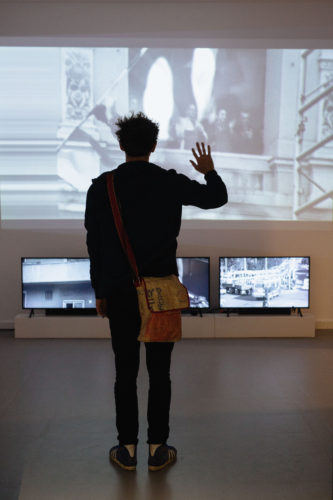
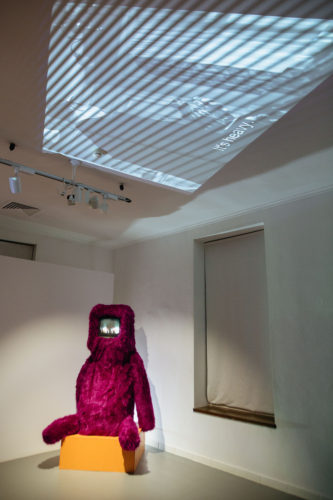
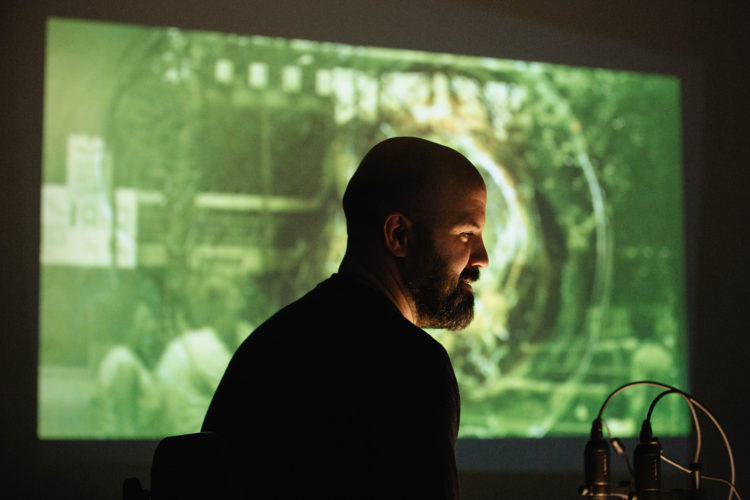
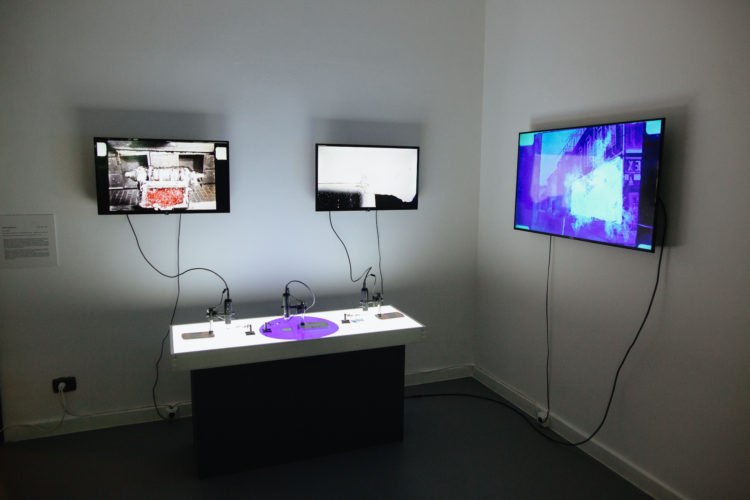
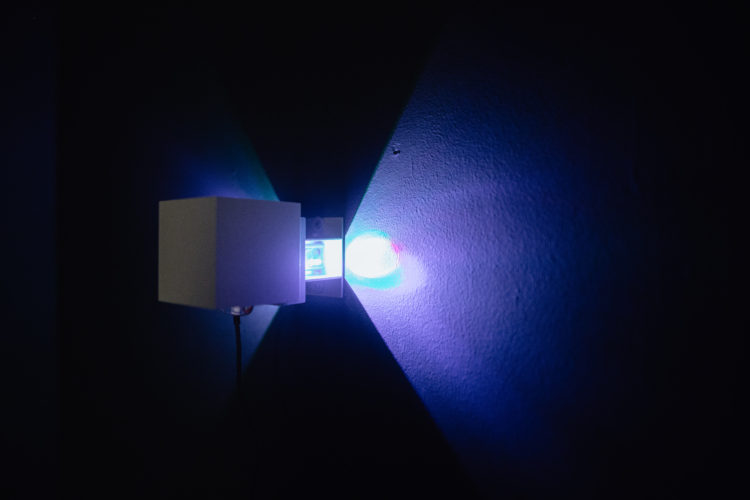
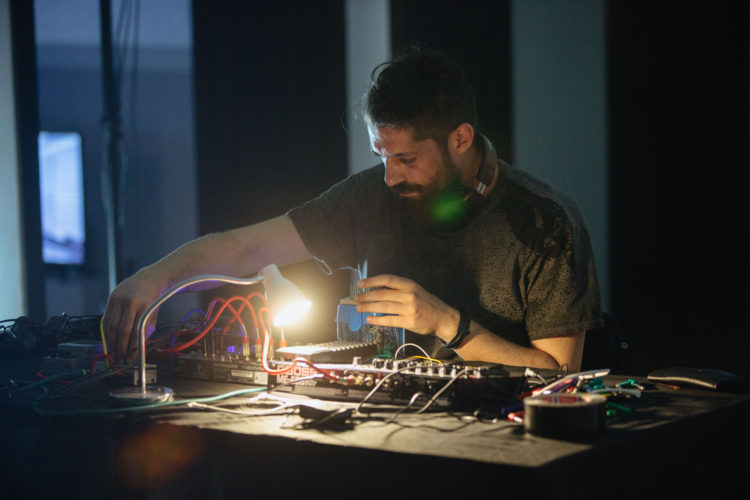
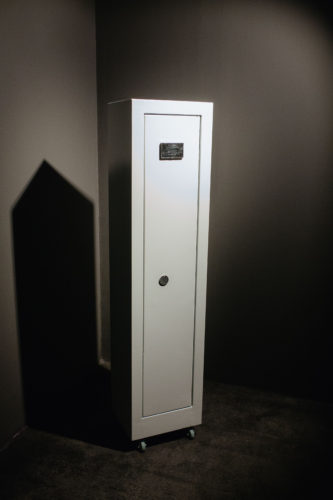
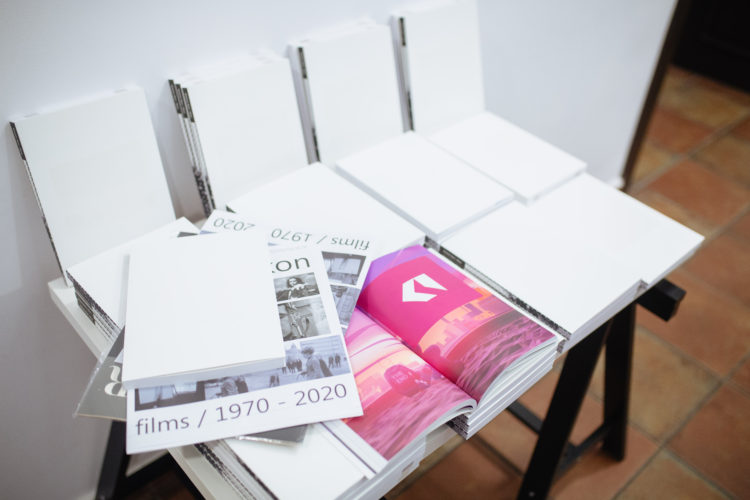
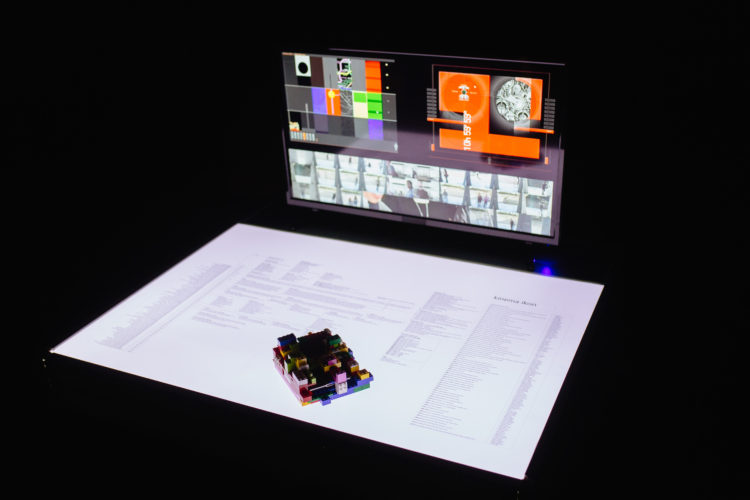
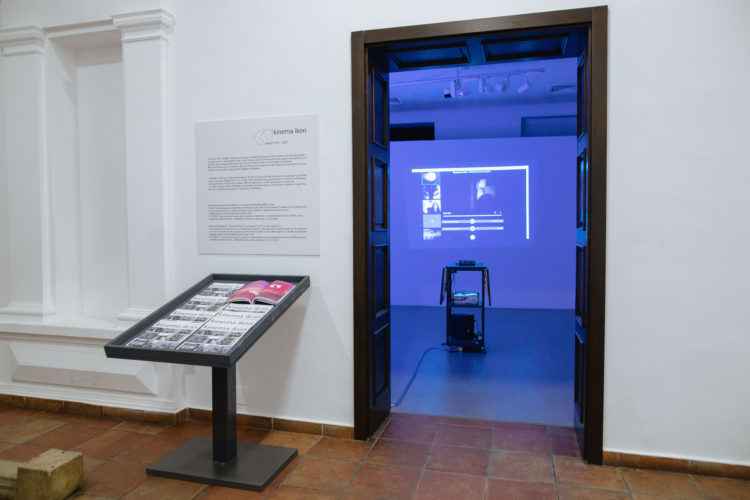
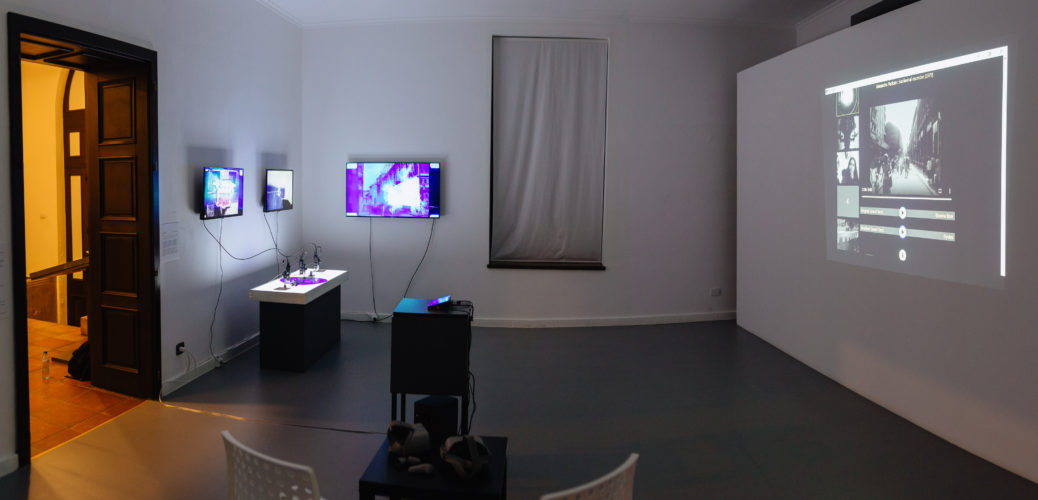
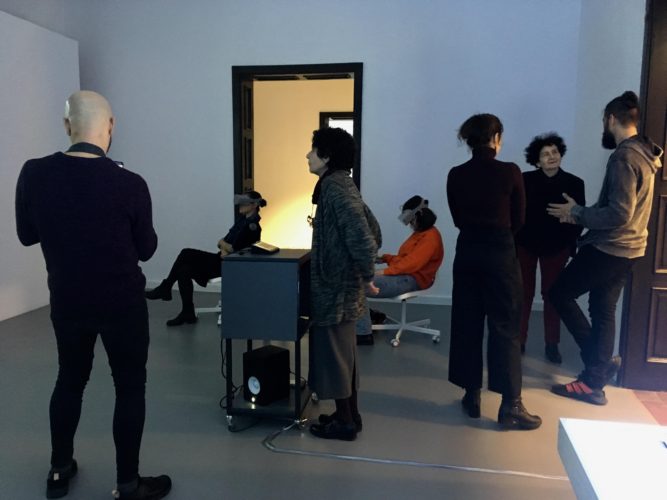
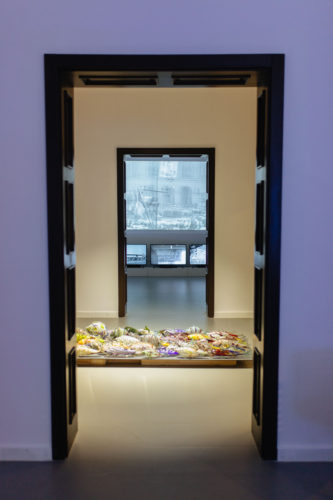
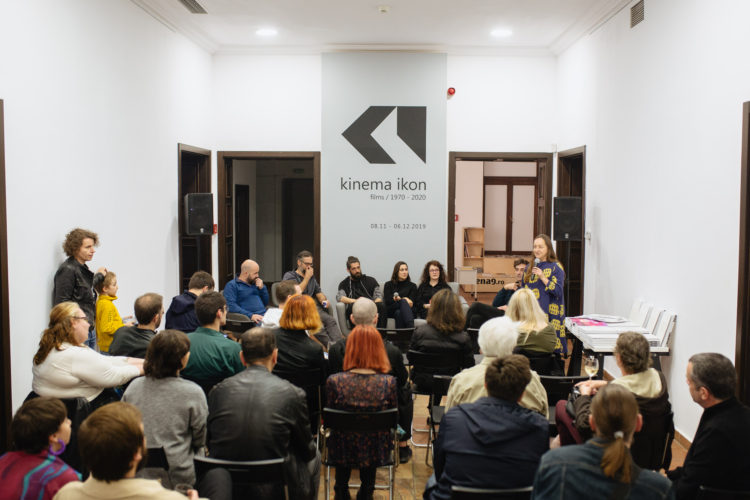
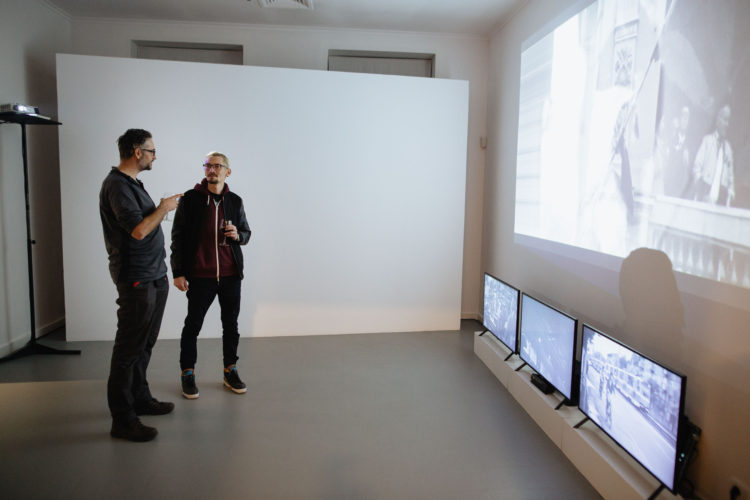
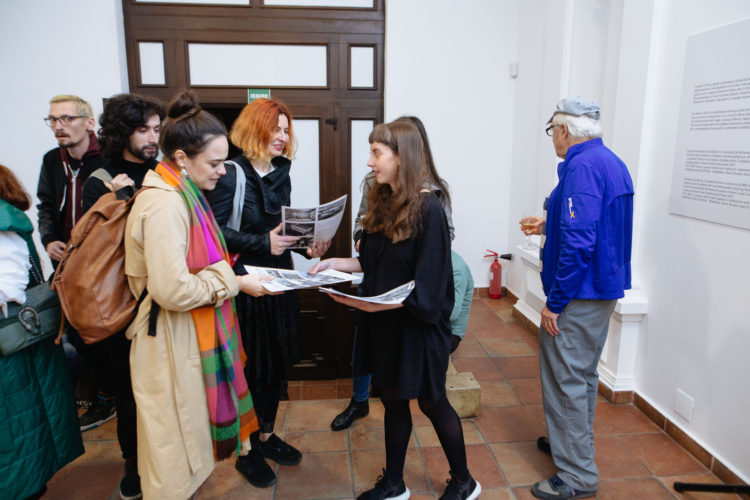
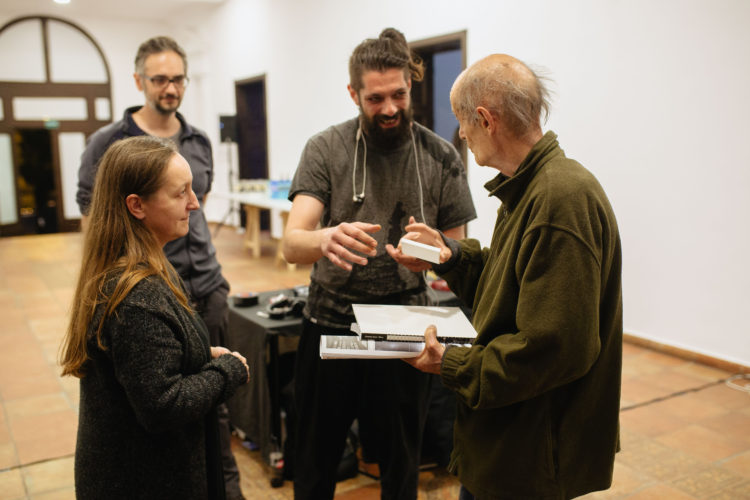
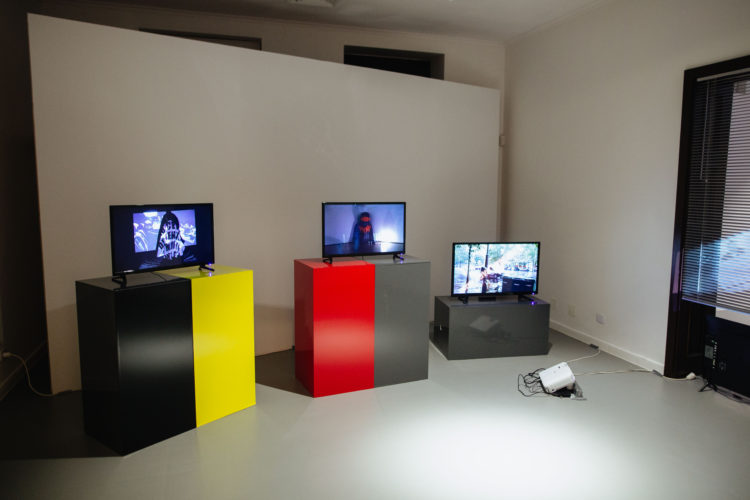
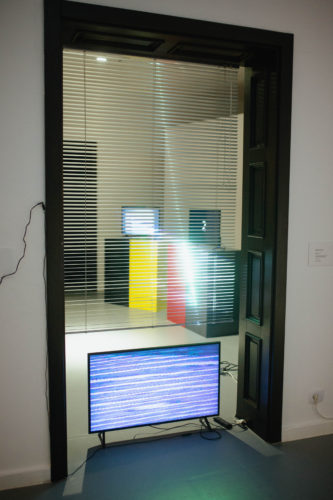
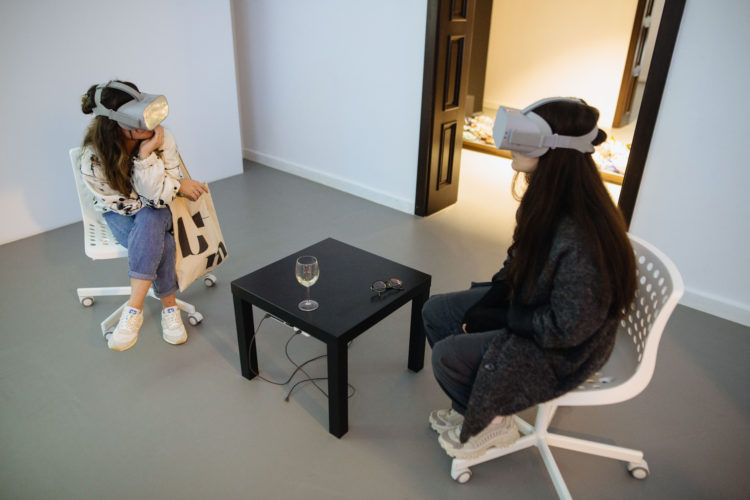
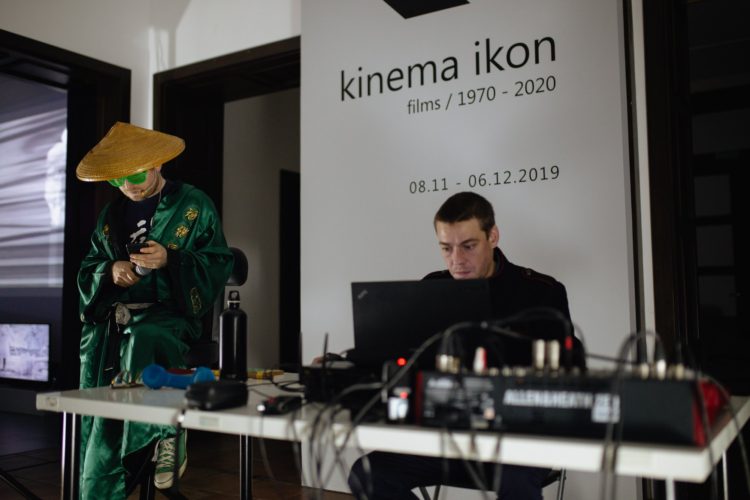
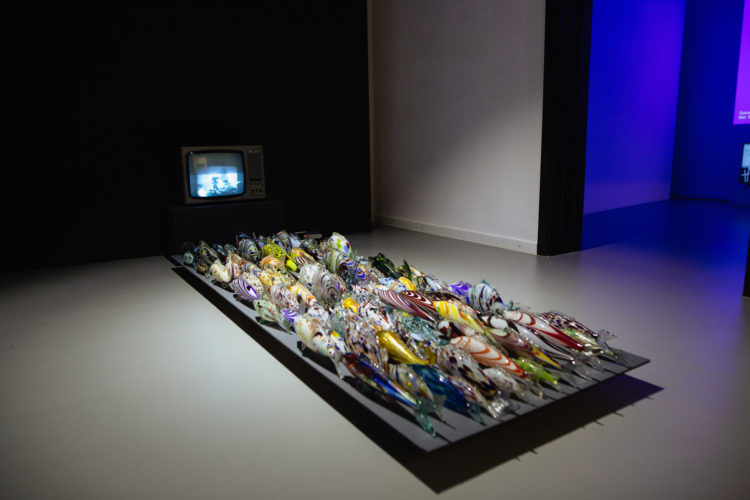
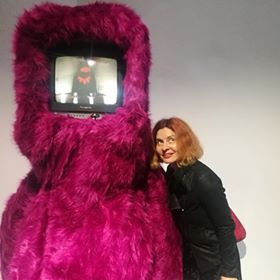
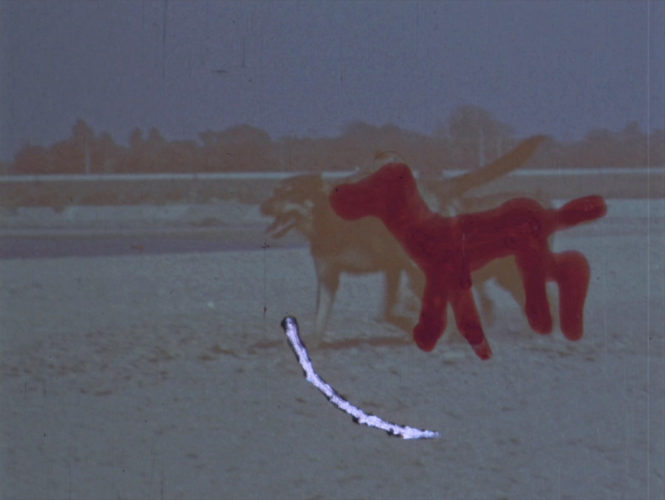
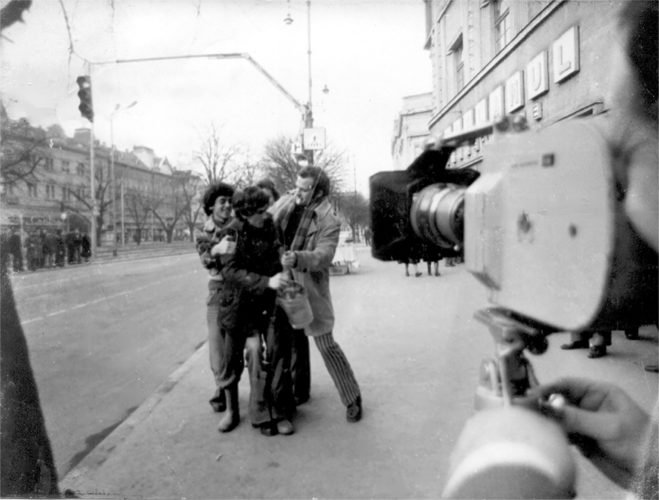
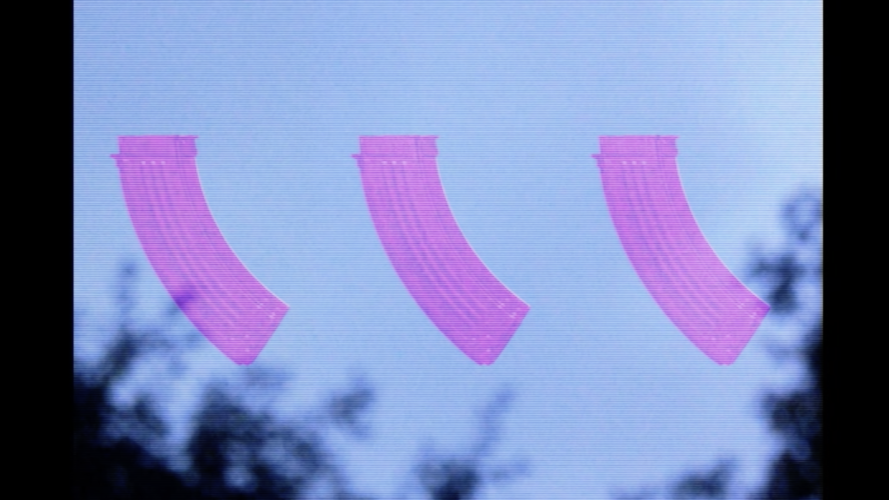
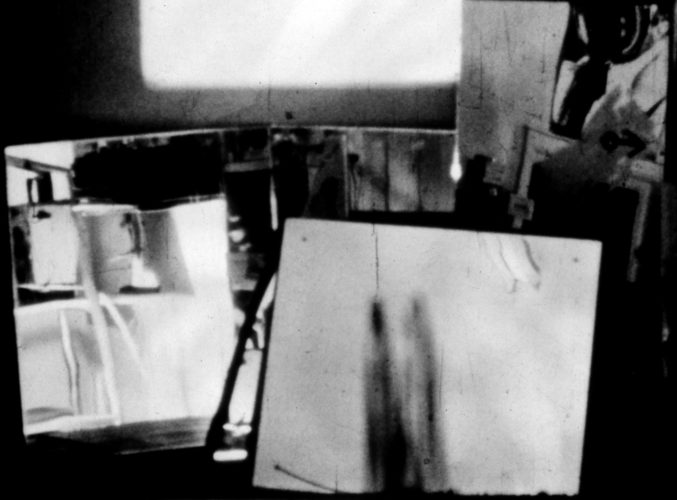
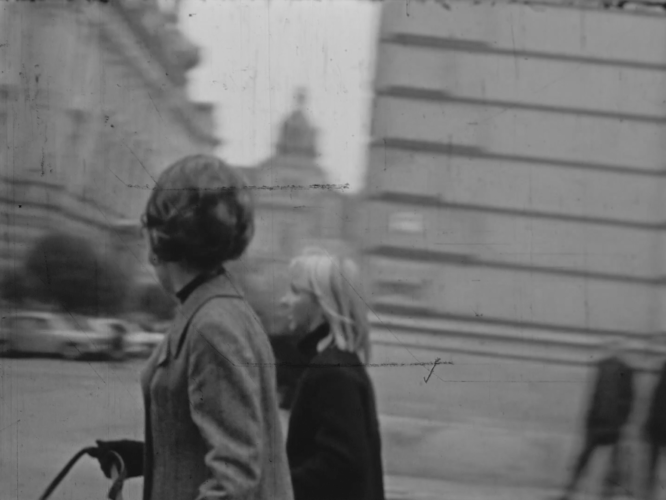
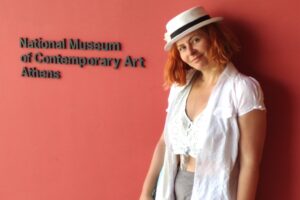
Comments are closed here.